Learn How to Grow a Japanese Maple Tree in a Pot and include this beautiful specimen in your house even if you have limited space!
If you have a patio, porch, garden area, then that is all you need to start planting a Japanese maple. The elegant, slim maple tree can thrive well in containers as long as you know how to take care of it. If you are interested in growing one on your own, follow our guide on How to Grow a Japanese Maple Tree in a Pot.
Botanical Name: Acer palmatum
USDA Zones: 5-9
Common Names: Japanese maple, Smooth Japanese maple, or Palmate maple
Learn how to grow an olive tree in a pot here
Propagating Japanese Maple Tree
Japanese Maple trees can be propagated via seed and grafting. Though the propagation method using seed is simpler and can be done at home by even beginner gardeners. Soak the seeds in warm water for 24 hours.
While propagating using cuttings, snip off 4-6 inches long cutting from a healthy tree, dip it in a rooting hormone and plant it in a pot filled with a good quality potting mix. Place the container in a sunny spot and mist it twice everyday. It will form roots in about 3-4 weeks.
Best Japanese Maple Tree Varieties for Pots
The dwarf varieties have smaller leaves, profuse branching, and shorter internodes are great for limited spaces. Dwarf maples are also used for rock gardens and bonsai.
1. Kurenai Jishi
It is one of the most desired dwarf Japanese maple tree varieties. The deep red, crinkled leaves are at their most vibrant in spring later turn into a more purple-burgundy color in summer and orange in the fall.
2. Rhode Island Red
The Rhode Island Red also has a deep red color that turns a few shades darker in the summer instead of fading out. It has a somewhat round growing habit that makes for a tidy miniature tree with purple twigs.
3. Ryugu
With its small flecked pink and white variegated leaves, striking red twigs in winter, it makes for another great compact tree because of its slow growth rate. If you love the color pink, this is a perfect choice!
4. Kuro Hime
This compact maple displays light-green colored leaves with pink and red margins. The tree derives its name from Kuro hime that translates into ‘black princess’ because of its dark green leaves in mid-summer.
5. Goshiki Kotohime
Growing orange in the spring, and green with pink and white highlights in summer, this tree would never fail to amaze you with its different remarkable shades!
6. Ruby Star
It is mostly adored for its pretty foliage in the shape of stars. This upright dwarf variety with its bright red leaves in spring can light up any space the container is placed.
7. Hupp’s Dwarf
Another small maple tree with a sizeable trunk and stout branches arranged in a sculptural manner. It displays a fiery orangish-red color in the fall and peach color in the spring.
8. Fairy Hair
It is a very slow-growing and unique tree with very thin, string-like, bright green-colored leaves that turns into a fierce crimson-red color in the fall.
9. Miyasama Yatsubusa
It is also called the Trident Maple for its tiny 3-lobed leaves that is different from the more common palmate leaves found in Japanese maples. It is also an excellent choice for a compact garden or even as bonsai.
Choosing a Container
12-16 inches of pot would be ideal for the dwarf maple tree. You can begin by planting the tree in a smaller pot, too, and re-pot when the tree gets bigger. Since maple trees are slow growers, it could mean you may have some time before you would have to update the planter.
Best Time for Planting a Japanese Maple Tree
The best time to plant your Japanese maples is autumn. But even if you run late, do not worry because your tree will patiently wait to begin growing until spring.
Requirements for Growing Japanese Maple Trees in Pots
Location
Ideally, morning sunlight with shade from the intense heat during the afternoons is ideal for Japanese maple trees when they are small and growing. Once they attain a height of 2-3 feet, place it by a South or West facing spot that receives full, bright sun for at least 6-8 hours every day.
Soil
It is best to grow Japanese maple in a well-drained, sandy loamy, fine-medium textured soil with a low-medium organic matter amount. Make sure the soil is not highly alkaline as they can perfectly grow in neutral, acidic, and even slight alkaline pH levels.
Watering
Unlike trees planted in the ground, when grown in containers, they do no have the advantage of insulation. During warmer climates, you need to water your container maples more. Do not overwater your potted plants to avoid any root rot or mildew issues. It is best to touch the topsoil to feel when the plant needs watering.
Temperature
Japanese maples grow best in USDA zones 5-9 and also grow in warmer and colder places with the right care. A well-grown maple tree can tolerate 0°F or -17°C on its exposed parts and the roots can withstand 14°F or -10°C.
Japanese Maple Tree Care
Fertilizer
After planting your maple tree, wait for at least until its second growing season before you fertilize it. This will give the tree enough time to adapt to the new growing condition. Use a balanced fertilizer once in 5-7 weeks. Do refer to the label for instructions.
You can also choose to add natural fertilizers such as coffee grounds, epsom salt to give that much-needed boost to your growing tree.
Pruning
The best time recommended to prune and pinch your lovely maples is during the winter when the tree is dormant and wait until late spring after the leaves start to grow. The smaller and the dwarf varieties of Japanese maple can grow up to 6-12 inches every year but you can manage to keep them compact and shorter with yearly pruning.
Start pruning back branches that grow towards the inside of the tree, or rub against others. If you notice any dead or damaged wood, cut it off. Watch out for branches that appear long, thin, and spindly in comparison to the other branches and once you spot them, cut them off from the base.
Pests and Diseases
The most common pests to attack Japanese Maples are the Japanese beetles. Other bugs that you need to watch out for are scale, mites, cottony maple, oleander, cottony camellia, cottony taxus, and mealybugs. You can get rid of them using an insecticidal soap solution.
Some of the diseases that can also damage your beauties by disfiguring the beautiful leaves and early defoliation are Phyllosticta leaf spot, Pseudomonas tip blight, and anthracnose. Adding a 2-3 inches layer of mulch, taking proper care of the watering, fertilizing, and pruning it properly can help prevent the diseases.
Best Japanese Maple Bonsai Varieties
1. Deshojo
In spring, this bonsai plant has very deep crimson-colored buds with tender leaves, and they turn green in summer.
2. Arakawa
This variety has become a rare type in the recent years. With its rough bark, it adds impact to a bonsai plant.
3. Shishigashira
One of the slow-growing Bonsai variety with wavy leaves, shorter, and stronger shoots.
4. Katsura
It makes for another interesting Bonsai to grow indoors because of its orange young leaves in the spring and fall that turns green in the summer.
5. Atropurpureum
With a beautiful purple-red, deeply lobed foliage in spring and summer and bright crimson red-colored one in the fall, it makes for an interesting plant to have.
6. Seigen
Another rarely found cultivar with tiny, finely pinnate, scarlet-red leaves, makes for a very delicate yet beautiful bonsai.
7. Kiyohime
The name means ‘little princess’ and the way it grows, it is known to be one of the best showstoppers of all bonsai plants.

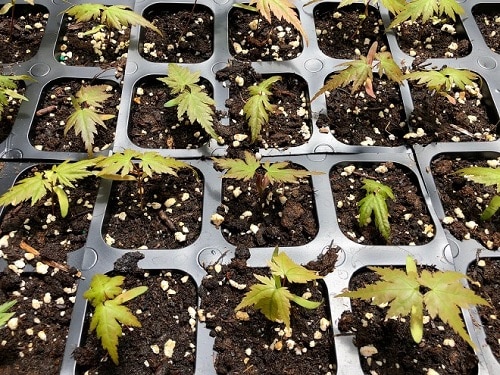

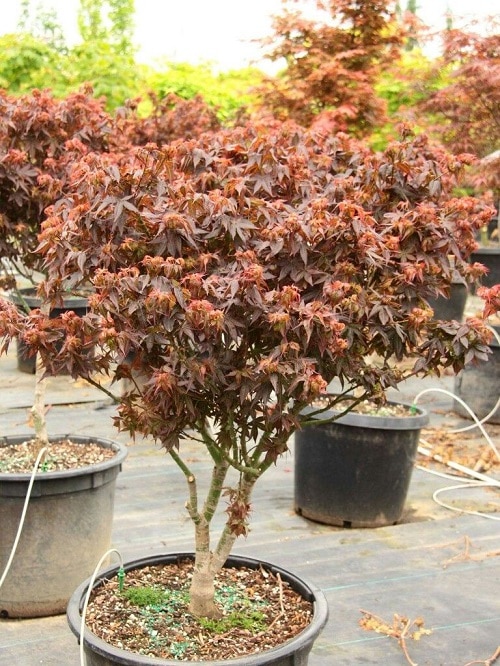
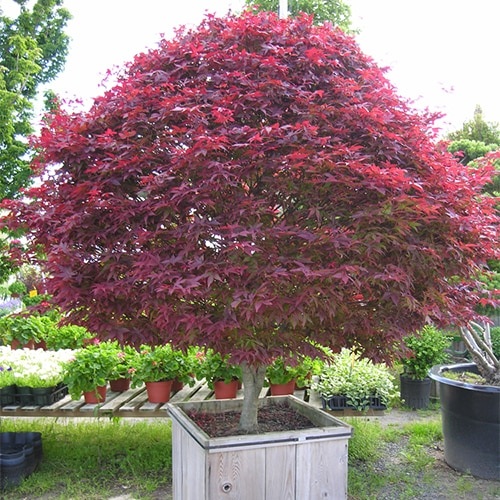
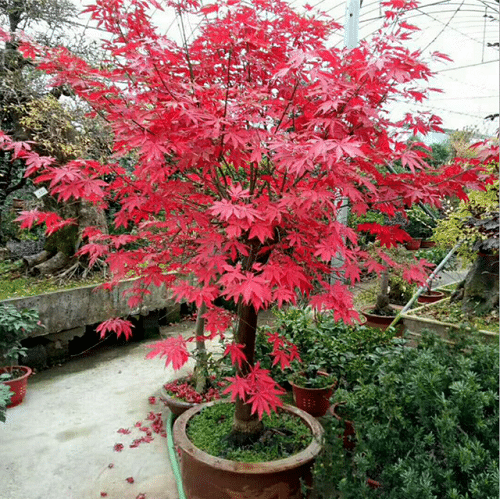
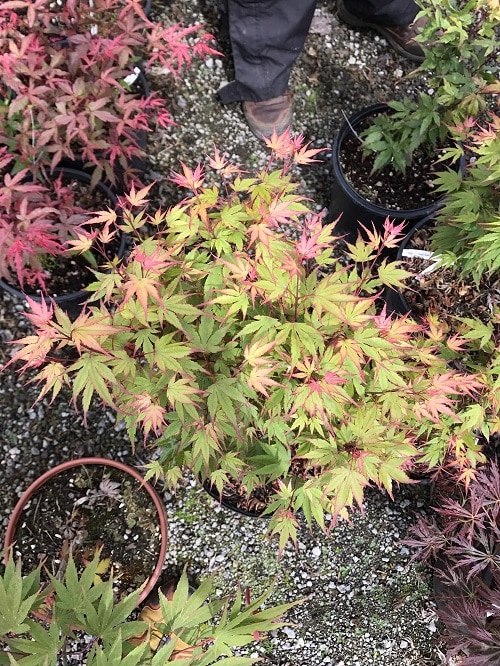
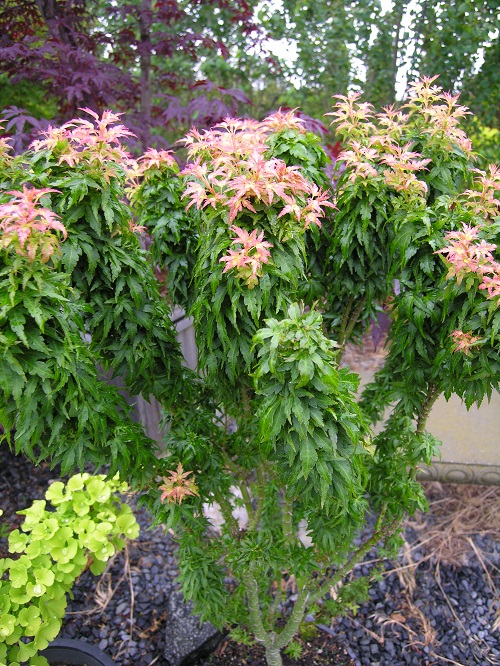
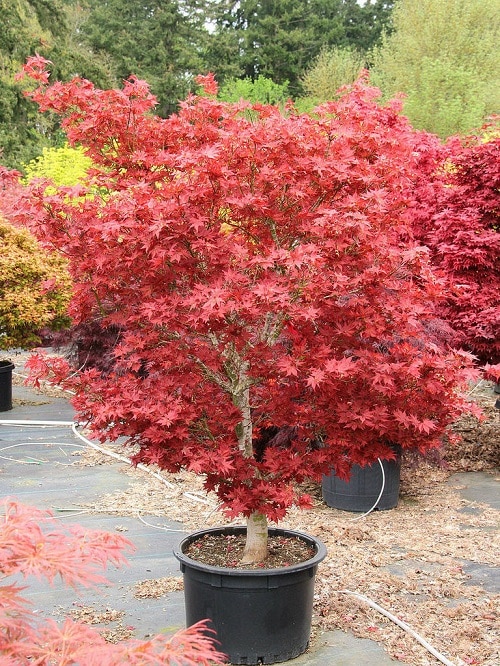
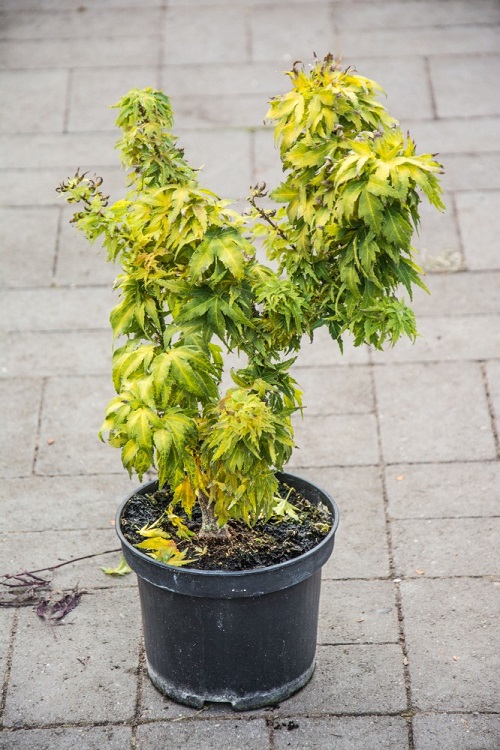
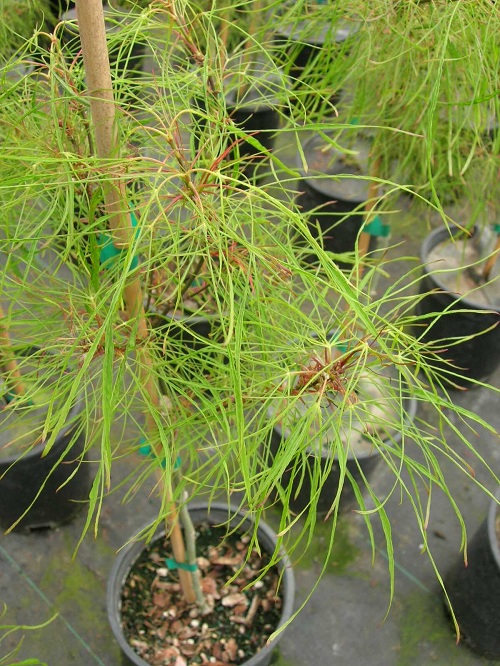
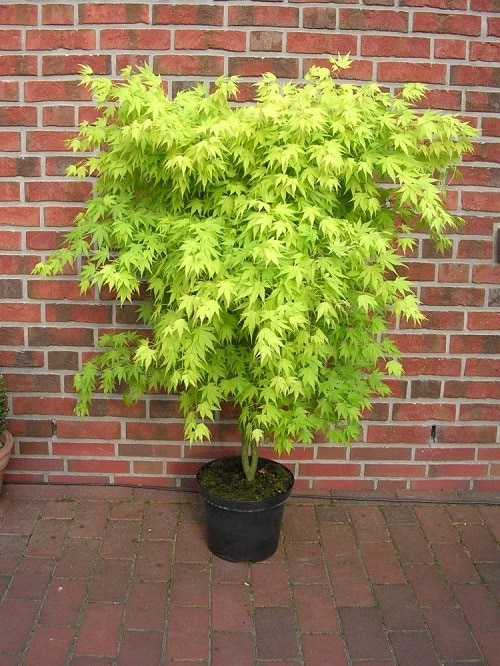
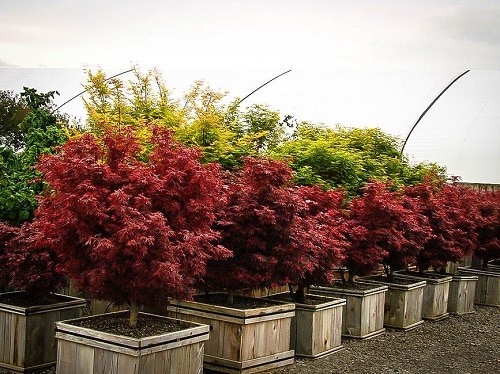
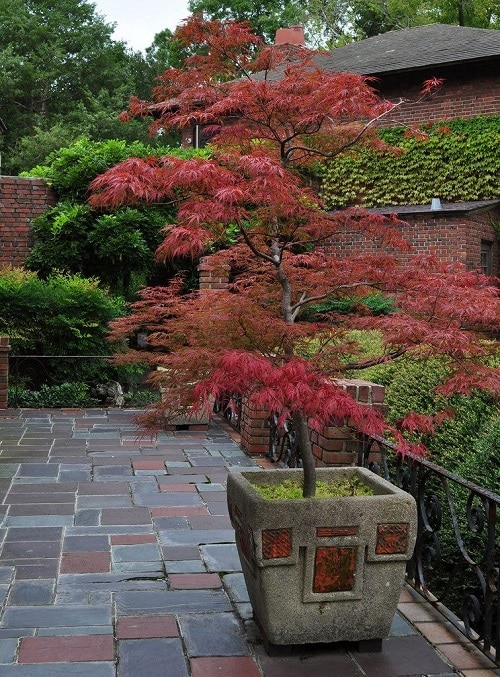
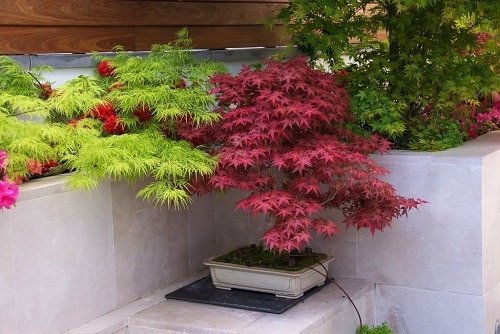
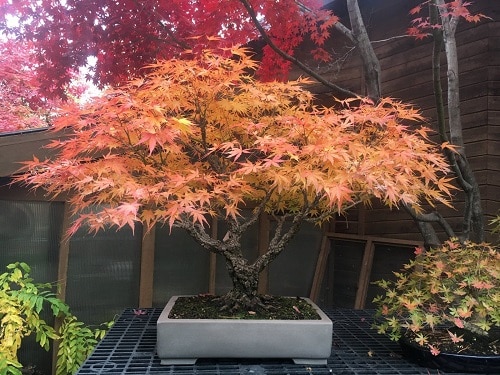


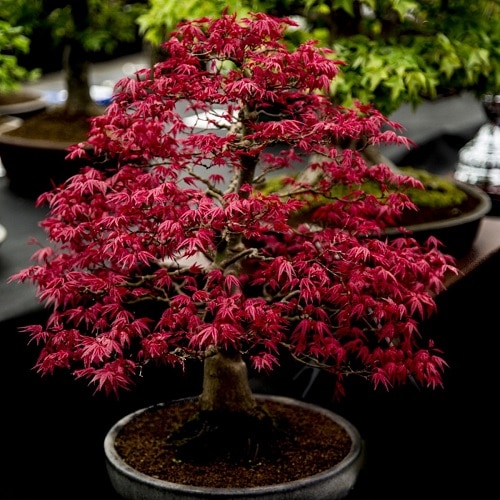
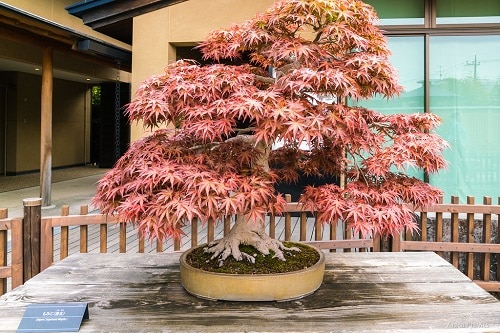


my acer palmatum was bought at about 3ft in height. And your recommendations at thus stage of maturity states fill sun will be beneficial. I had it planted where it will receive full Texas zone 8 sun,but I dug it up after reading other articles about too much sun thinking it would be scorched by all that hot sun shining down on it. I really want to plant it back where I had it initially. Before I do so though what are your thoughts based on my dilemma between your recommendations/advice and other posts recommending just the opposite?